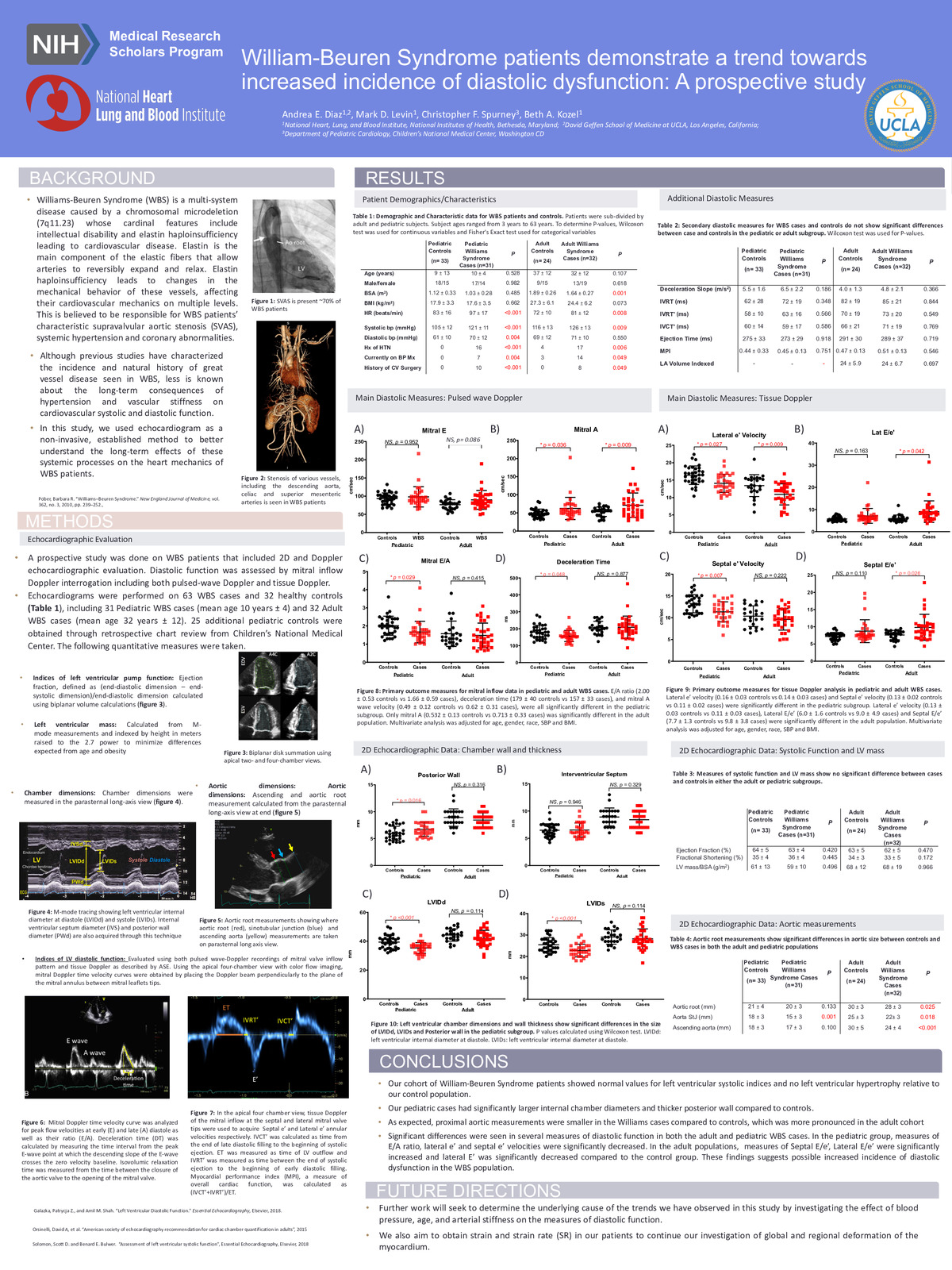-
Author
Andrea Diaz -
Co-author
Mark Levin, Christopher Spurney, Beth Kozel
-
Title
Increased prevalence of diastolic dysfunction in Williams-Beuren Syndrome
-
Abstract
Background: Williams-Beuren Syndrome (WBS) is a multi-system disease caused by a chromosomal microdeletion (7q11.23) including the gene for elastin whose cardinal features include supravalvar aortic stenosis, intellectual disability and distinct facies. Although previous studies have characterized the incidence and post-surgical outcomes of great vessel disease seen in WBS, less is known about its long-term cardiac consequences. The goal of this study was to prospectively determine the incidence of diastolic dysfunction and its relation to vascular stiffness in WBS.
Methods: A prospective study was done on WBS patients that included 2D and Doppler echocardiographic evaluation. Diastolic function was assessed by mitral inflow Doppler interrogation including both pulsed-wave Doppler and tissue Doppler. Echocardiograms were performed on 63 WBS cases and 32 healthy controls, including 31 Pediatric WBS cases (mean age 10 years ± 4) and 32 Adult WBS cases (mean age 32 years ± 12). 25 additional pediatric controls were obtained through retrospective chart review from Children’s National Medical Center. The following quantitative measures were taken.
Results: Systolic function was preserved as evidenced by normal ejection fraction (WBS: 62± 4% vs Control:62±5%;). Abnormal diastolic function was demonstrated by a significantly increased mitral A velocity in subjects with WBS (0.66±0.2 vs 0.51±0.1 m/s; p=0.004). Mitral E velocity was increased (p=0.15) and decreased mean mitral E:A ratio in WBS (p=0.2). Tissue Doppler lateral E/e’ values were significantly increased in WBS cases (7.6±1.9 vs 5.8±1.2; p<0.001). Septal E/e’ values were also significantly increased (9.0±2.8 vs 7.5±1.3; p= 0.03). Pulse wave velocity was significantly increased in patients with WBS (6.3±1.4 vs 5.4±1.4 m/s, p=0.04.) Single variable linear regression models with PWV and mitral A wave velocity showed a significant positive correlation in both groups with an increased slope in WBS cases (10.7 vs 4.7, p=0.07).
Conclusion: WBS demonstrates increased diastolic dysfunction and increased vascular stiffness, increasing the risk for the potential development of cardiomyopathy observed in these patients.
-
College
AAC
-
Zoom
-
PDF

